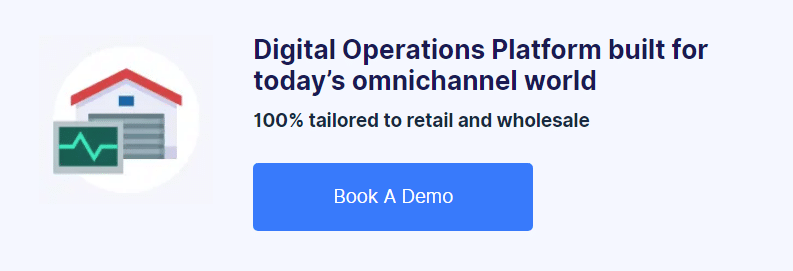It’s a misty Monday morning. You’re sitting at your desk with a cup of coffee, wishing you were exploring the Himalayas instead. The weather isn’t meant to be much better tomorrow, and every day this week looks identical from a work standpoint. You feel tremendously bored.
Bing: there’s an email with an intriguing subject line in your inbox. It’s a pre-order shout out from your favorite tech company.
Bam! Your A.M. just got more interesting.
Why do pre-order strategies work so well? Because they’re groundbreaking. They tap into a visceral part of each one of us — the explorer, the pioneer. We want to be first on board. We want to get our hands on products before they become commonplace.
In this article, we’ll define what a pre-order actually is and why it’s an essential part of ecommerce. Then we’ll explore the structure of a successful pre-order marketing campaign. Let’s go.
How Do Pre Orders Work?
Pre-orders are orders placed for items that aren’t available yet. Unique products under development and brand new products both make great pre-order subjects. Typically, a pre-order timeline is between two weeks and two months. If it’s too far ahead, customers are likely to forget about their orders.
Crowdfunding platforms like KickStarter and IndieGoGo are often used for pre-order campaigns, and companies also advertise upcoming products heavily via social media. Larger SaaS ecommerce platforms, like BigCommerce, also support pre-order strategy.
“In short, pre-orders are orders placed for items that aren’t available yet.”
Here’s an example. Back in 2018, Larq launched its innovative self-cleaning water bottle. The business drummed up interest in its product via several crowdfunding sites and a social media campaign. Eventually, Larq raised a record-breaking $1.7 million, which made production possible.
Companies sell video games, books, gadgets, running shoes, and even household appliances via pre-order all the time. Some companies use pre-orders to customize products for customers all over the globe.
Why Offer Pre-Orders?
The pre-order strategy is incredibly flexible. Larger companies use PR agencies and television adverts to dangle their products in front of customers, while smaller firms with compact budgets do the same thing with Instagram, Twitter, and email marketing campaigns. When they’re well planned, pre-order schemes generate the following benefits:
1. Forecast product demand.
You can gauge demand for your product via pre-orders. By the time Larq began to manufacture its water bottles, the company had a ton of orders and knew that it would probably need to order a second production run. If Larq had gone with traditional marketing rather than a pre-order strategy, it wouldn’t have been able to stay on top of demand.
Sometimes, products aren’t as popular as expected. In those cases, pre-order campaigns help companies produce just the right amount of stock. Rather than being tied up unsold inventory, funds stay available for future marketing endeavors. Savvy businesses shape their regular marketing strategies with lessons learned from pre-order drives.
2. Generate hype.
Big brands with established fans (like Larq, for example) know how to create publicity around new products.
They make customers feel special — like trendsetters — and leverage that emotional response to boost sales. You can use similar strategies to generate a buzz around your company and your new product.
Limited pre-orders cause a reliable stir on social media and beyond. If you mention that your products are rare and hard to obtain, you also imply that they’re special — and by proxy, their future owners are special people. Also known as the “scarcity principle,” this is one of the oldest tricks in the marketing book, and it almost never fails.
Even if sales are less robust than expected, pre-order campaigns provide publicity and help to raise brand awareness. Elegant marketing strategies plant seeds in people’s hearts, and repeated exposure to the same brand can create demand for a product in previously uncharted consumer territory. Catchy slogans help, too.
3. Guaranteed revenue.
Let’s go back to Larq for a moment. When Larq launched its initial funding campaign, it had a working prototype, but no retail-ready products at all. To produce its self-cleaning water bottle, Larq had to raise money for an initial production run. Their robust marketing strategy and hard work paid off — literally.
Businesses with plenty of capital invest in products before they take money from consumers. Startup schemes and crowdfunding campaigns tend to work in the opposite way. Companies showcase prototypes, pitch release dates, and offer hypothetical products at reduced prices. Businesses channel the funds they raise from speculative product sales into production runs, and consumers receive their orders several months down the line. Ta-da: manifestation at its finest.
Pitfalls to Ecommerce Pre-Orders
Pre-orders are great, but they won’t keep your store going forever. You’ll need a traditional marketing scheme and a follow-on business strategy to maintain conversions once the initial hype is over. Here are a couple of other pre-order pitfalls:
1. Operationally challenging.
To run a grand pre-order scheme, you have to be organized. You have to know all the ins and outs of your supply chain far in advance, including manufacturing costs, overseas shipping charges, and customs requirements. To gauge product quality from a new manufacturer, consider doing a small production test run before you place an order for 10,000 units.
You also need to be very careful which marketplaces you partner with for pre-orders. Amazon merchants, for example, have to dispatch orders within 30 days or they risk cancellation. So if you’re locked into a supply chain, double-check all your sales partnerships. For peace of mind, consider creating an independently hosted SaaS ecommerce site for pre-orders.
2. Managing customer expectations.
Consumers are an impatient lot at the best of times. Nowadays, customers usually receive shipments within days (or hours — thanks again, Amazon), so extended wait times for pre-orders feel like an eternity. If your lead time ends up being longer than expected, touch base with your sponsors. Good communication minimizes consumer frustration.
This applies in advance of opening pre-orders, too – you don’t want to emulate the recent PS5 launch. It was originally scheduled to launch on Sept 17, 2020, but many retailers opened their orders on the 16th.
Before you open pre-orders, make sure every site you’re selling it through works to a strict schedule. When you receive your final wholesale shipment, check products over as quickly and thoroughly as possible and then get them straight out to your customers.
When Do Pre-Orders Make Sense for an Ecommerce Business?
Pre-orders are not a new concept. Back in the 1980s and 1990s, publishing houses used pre-orders to gauge demand for new books. Nowadays, gaming publishers and consumer electronics manufacturers do the same thing. Pre-order strategies take time and effort to deploy, but when they’re well executed, their results can be outstanding.
Successful pre-order gameplans generate product demand on launch day and beyond. Video game studios, musicians, tech companies, and auto manufacturers all use pre-orders to amplify sales. Public companies’ share prices rise in response to strong pre-orders and wobble when pre-orders are weak.
Pre-order marketing plans create energy around products and their parent companies. Maybe you’re an inventor with a truly innovative idea; perhaps you want to break into the luxury market. Either way, you need to turn your business into an alpha brand. Ready to go? Read on.
5 Steps for Building a Pre-Order Marketing Campaign
Great pre-order strategies don’t happen by magic — they’re organized well in advance by people who know what they’re doing. To launch your brand properly, you need to blueprint each step of the pre-order process in meticulous detail, from product selection to post-launch.
1. Establish a team dedicated to pre-orders.
Mid-market businesses: You need to create a team dedicated to pre-order success. Team members must be passionate about the product in question and dedicated to its success in the marketplace. For best results, include an inspirational marketing expert and at least one developer. Keep the rest of your employees informed about pre-launch progress via flyers or emails — try to generate a feeling of excitement in the office.
Small businesses: If you’re the only person in your company or you have a small staff, you need everyone in your business on board from the very beginning. After all, if your pre-order strategy is successful, everyone will benefit.
2. Get your team and website ready for launch.
Ironically, many business owners worry about pre-order flops when they should be planning for success. Their ecommerce sites go down because of traffic spikes, they don’t have enough inventory to keep up with demand, or their supply chains suddenly crumble. To avoid unexpected headaches, consider going with Brightpearl to solve inventory management issues, and double-check manufacturing limits before you press the shiny red launch button. This is where limited pre-orders can be helpful, allowing you to only sell stock you can guarantee you’ll have.
Also, make sure you have a dedicated landing page for information about pre-order and what to expect. This helps customers feel more comfortable and secure in purchasing a pre-order item.
3. Create an effective pre-order promotional plan.
What you do before the pre-order launch day is much more important than what you do on the big day itself. Use the weeks and months before zero hour to promote your new product, write press releases, craft ads, calibrate your supply chain, and organize warehousing and shipping options.
Let’s unpack that a little more:
Before the pre-order
Use SEO tactics, content marketing, paid adverts, fan-focused events, and social media posts to build consumer awareness and generate interest (and later, to drive traffic to your product page). The more talk, the better. Create at least two email marketing campaigns and send the first one to your existing followers. Put together special online pre-launch product packages, collector’s editions, or bonus products. Crowdfunding campaigns often have ‘stretch goals’ – a set of things that will be unlocked once a certain amount of money is raised. You can emulate this by unlocking extra things at a certain amount of pre-orders. Pre-orders need to offer something more than retail value.
“What you do before the pre-order product launch day is much more important than what you do on the big day itself.”
During pre-order launch
According to analysts, nearly a third of all orders happen on the first day for pre-orders. When D-Day arrives, collect email addresses and add them to your email marketing database. Send customers who pre-order products coupon codes with bigger discounts on future purchases. Publish all the press releases you wrote weeks ago (you did that, right?), and drum up traffic using social media posts.
Nearly all prosperous pre-order campaigns have highs and lows. You’ll get an initial flurry of orders, which will taper off after a few days. Then you’ll hit a pre-order “dead zone,” which usually lasts about a week and feels endless. That’s all normal. If you play your cards right, pre-orders resume and then stabilize until you begin to generate regular product sales.
Wait — why the dead zone, though? Well, ardent fans and followers usually make purchases right at the beginning of pre-order campaigns. Other potential customers need extra encouragement. To keep pre-orders coming in, dispatch the second email marketing campaign you wrote during the pre-launch phase. Social media posts also help, as do paid ads.
4. Create a sense of urgency in customers.
Excited consumers buy products. To turn regular site visitors into enthusiastic consumers, you have to create a sense of urgency; essentially, you have to capitalize on consumer FOMO. Your products are not only fantastic, they’re also limited and rare! Consumers who pre-order your products are clever and special!
Beautiful product images, well-written ads, social media posts, product descriptions, and marketing emails help drive the message home. You can break down barriers to purchase a little more if you use these two tactics:
- When consumers pre-order products, they receive generous discounts. The more products they buy, the greater the discount.
- Pre-orders are limited (1,000 units, 10,000 units, etc). If they don’t pre-purchase, they might not get the chance to buy your product until much later on.
5. Generate buzz and build awareness.
People talk to each other, and brand awareness builds on a buzz. To generate attention for your brand, tell as many media-centric individuals as possible about it. Here are a few ideas to help you get started:
Collaborate with influencers
Influencers live on popular social media platforms like Twitter, Instagram, and Facebook. They promote interesting products, and their followers listen to them because they seem authentic. If you decide to partner with influencers, identify several popular individuals whose interests match your brand. Work with them on a social media campaign – and trust that they know their field. Influencers often have interesting ideas on building engagement, and they’ll be able to draw a range of potential customers to you.
Pitch to the media
Social media and word of mouth are important, but traditional media platforms are vital for widespread success. Before you send your pitch to every newspaper editor under the sun, think about your company image. Stay away from deeply partisan media outlets unless you plan to leverage politics to promote your business.
Launch advertisements across platforms
Paid ads generate product awareness and help drive traffic to your site, but some are more effective than others. By far, the most well known web-based adverts are pay-per-click (PPC). The big three providers are Google Ads (formerly Google AdWords), Amazon Advertising, and Microsoft Advertising. To deploy banner ads, check out Google Display Network, Headway, Zoomd, or AdColony.
Create content throughout the lifecycle
To keep your pre-order campaign active, create a content calendar loaded with circulation dates for adverts, social media posts, and traditional media articles. Create new content regularly, and consider using Brightpearl’s customer relations management (CRM) software to manage your email marketing list.
4 Things to Consider When Planning for Pre-Order Campaigns
As you craft your pre-order strategy, remember: winners keep score. Before you embark on your product marketing adventure, make sure that everyone in your company is on the same page. For best results, keep the following tips in mind:
1. Outline campaign goals and KPIs.
Let’s talk about campaign goals. Before you do almost anything else, create a cost-benefit analysis to figure out how many products you have to sell to justify your pre-order campaign. If you are the manufacturer, factor in the cost of raw materials; if not, go with the wholesale price you’ll pay per unit. Don’t forget to factor in shipping, staff wages, and other costs. Include your pre-order product price, processing fees, and packaging costs. Finally, figure out a rough projection of your marketing costs.
To estimate consumer demand you need to identify several benchmark KPIs at least four months before pre-order launch day. Keep track of how many social media followers you acquire as you push content on Twitter and Instagram, and monitor comments and user engagement to find out what people think about your brand.
When launch day arrives, pre-orders are another KPI. You’ll want to compare first day pre-order sales to other (similar) product pre-order launches. Also, pay attention to the increase of newly received customer email addresses . If you track these metrics, you can gauge market receptiveness for your product. You can also make tempting adjustments to pre-order bundles and bonus products based on feedback.
2. Momentum is key.
To achieve real success, you must keep the momentum going in your campaign. All the planning you’ve done thus far is the equivalent of vehicle maintenance — you’ve checked the engine, topped up fluids, and put new tires on your car. Now it’s time to drive that baby to market.
To maintain forward thrust, you have to keep adding fuel to your marketing machine. If you’re using Kickstarter or Indiegogo in tandem with your ecommerce site and your pre-orders are strong, your campaign could go viral. If you’re not ready for success, your campaign could collapse like a loaf of over-fermented sourdough.
To avoid that horrifying scenario, partner with all the marketing channels you can think of, and keep your partnerships going for the duration of your pre-order crusade. Leverage social media ads, influencer promotions, press pieces, and in-person events for success. If anything, ramp up your promotional endeavors after launch day.
3. Create a memorable shopping experience.
Stellar pre-order campaigns are genuinely memorable events. Well-planned schemes create brand loyalty and encourage communication. Rather than engaging in a typical ecommerce transaction, consumers who order before launch day become part of an interactive movement.
Crisp, professional-looking product photos, clear product descriptions, transparent production timelines, acknowledgement of (and solutions for) potential risks, and up-front shipping dates all play into a positive consumer experience. If people know exactly what they’re getting into, they’re far more likely to support your crowdfunding or pre-order campaign. Don’t forget to optimize your site for mobile devices to boost your conversion rate!
Glossybox’s pre-order page for their subscription box
To keep your customers happy, stay honest about delays and setbacks, and keep people in the loop if things don’t go as expected. Being upfront is especially important if you’ve taken money in advance for speculative products and the first production run is a dud. Your customers want you to succeed. Being open lets them sympathise and support you, rather than wondering if you’re scamming them.
4. Examine your operational workflows.
We’ve gone over this before, but it’s worth mentioning again: to achieve a pre-order victory, you need to plan your moves in advance. You’re selling products that don’t exist, yet – to succeed, you’ll need to make them real.
Regular ecommerce orders simply get picked, packed, and sent off to customers. Pre-orders can sit in databases for months while marketing campaigns and production runs happen behind the scenes. Things can get complicated if customers order in-stock products at the same time as hypothetical products. Do you send in-stock items out separately, or do you wait to fulfill orders until your new products arrive?
Whatever you decide, make sure you stay organized. Perform regular database backups, email your manufacturing company at least once a week, and order shipping supplies before your pre-order products arrive. Talk to your operations team to make sure you create a really solid consumer experience, and adjust your workflow to compensate for unforeseen delays.
Conclusion
“Always deliver more than expected.” — Larry Page
Pre-order campaigns work because consumers love to be on the cutting edge of all things new. If you understand human psychology and have a solid marketing background, you can combine those two skill sets to push pre-order sales through the roof.










